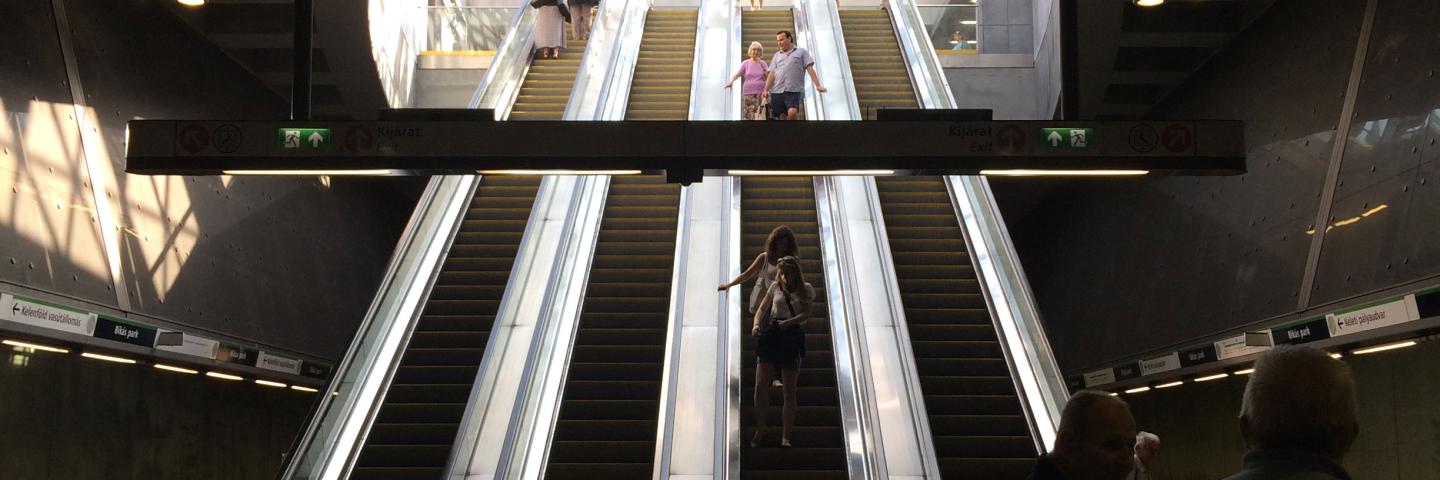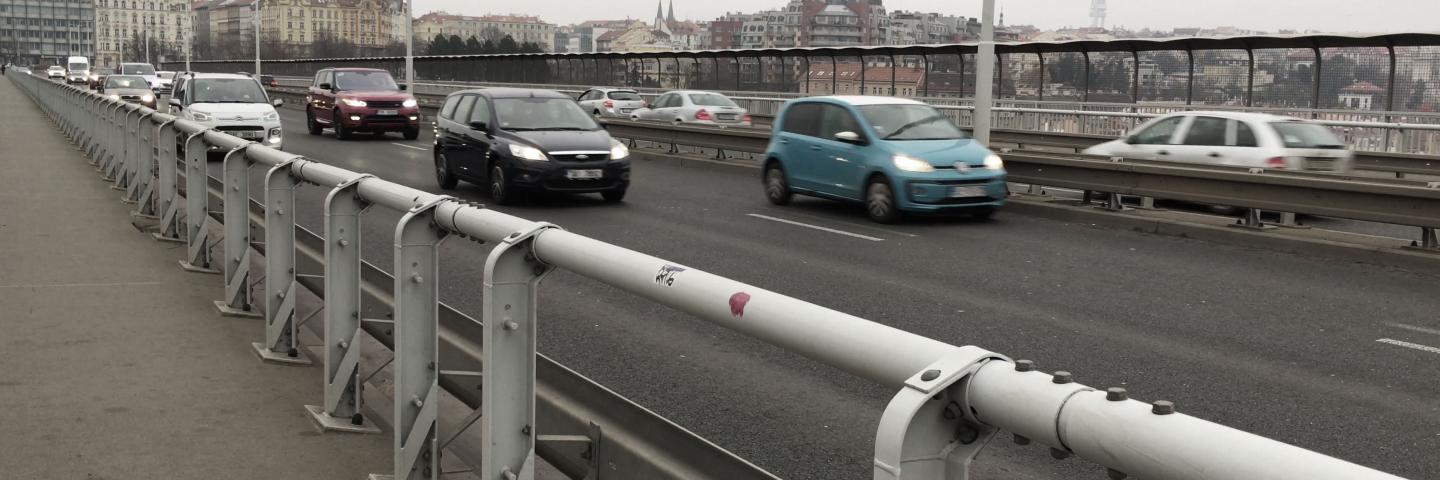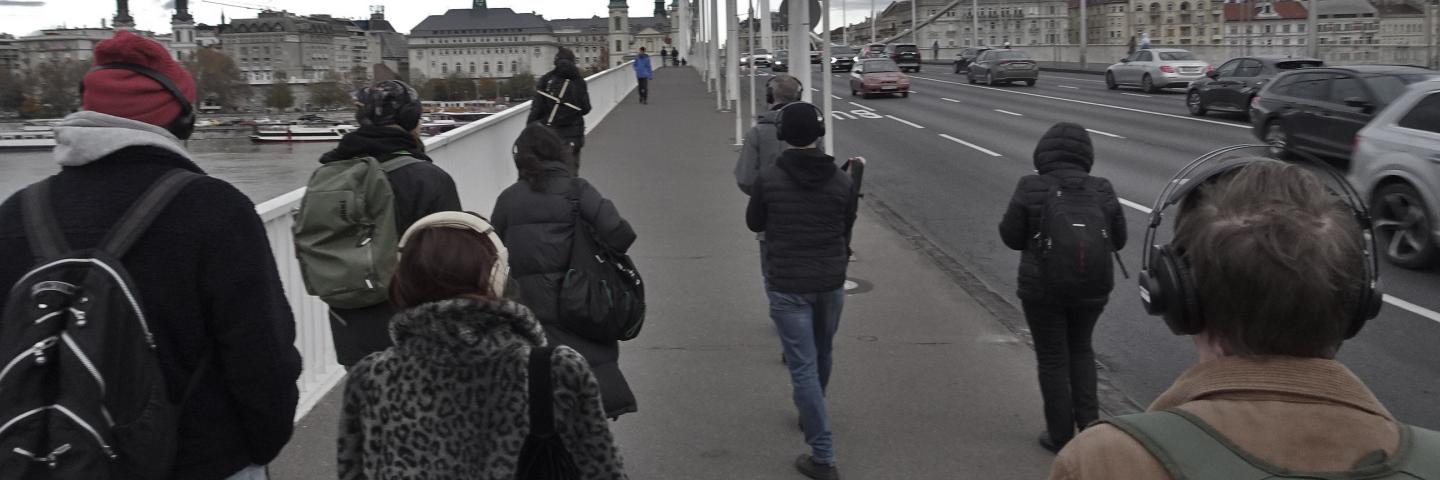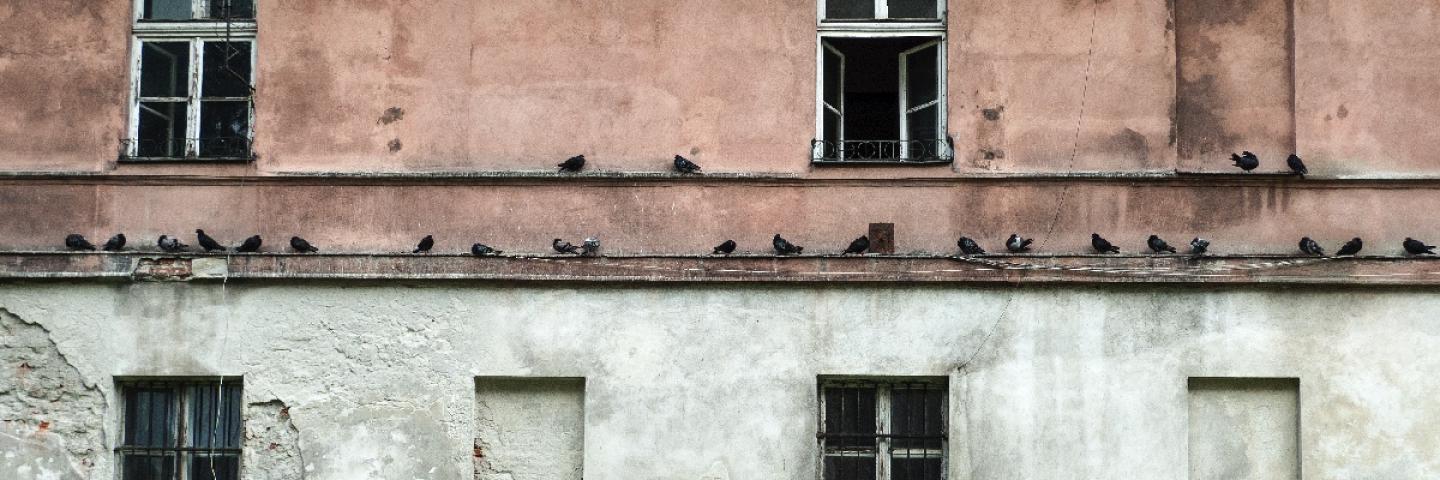Mark Bain
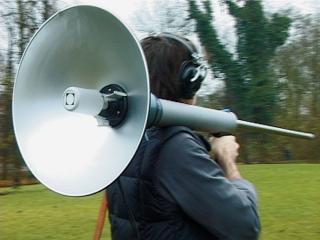
Mark Bain (born in 1966) is an American contemporary sound and installation artist, living in Holland. His work focuses on the investigation of vibrational mechanics at the threshold between sound, science and architecture, often through the means of site-specific installations. He has also worked as a musician and founded Simulux, a research center for audio-visual practices. From 1986 to 1990, he attended the Cornish College of Art. After that, he moved to Chicago, Illinois, where he enrolled in the Bachelor of Fine Arts program at the School of Arts Institute. In 1998, he studied in the Skowhegan School of Painting and Sculpture (Skowhegan, ME), before obtaining a Masters of Science degree in Visual Studies from the Massachusetts Institute of Technology that same year. Later, in 1999, he moved to Amsterdam for a two-year residency at the Rijksacademie van Beeldende Kunsten and has lived and worked there.
Bain's artistic vocabulary features a multidisciplinary approach that mixes elements from sound and video art practices, usually culminating in the creation of site-specific installations. The main object of his work and artistic research deals with investigating acoustic spaces which are usually out of the human hearing range. Some of his most notable endeavours show a particular concern with the sounds of architectural sites, having resorted to the amplification of the infrasounds that inhabit these structures or to making them vibrate using frequency oscillations that resonate with them in order to address his artistic focus. Max Hollein summarizes the work of the american artist as installations that "sonically activate the constructions and destabilise the given site".
Coming from a family with a background in architecture, his attempts to deconstruct the stability of these structures by exposing their vibrating nature have granted him the label of "anti-architect", framing his work as "architerrorism", a notion that derives from Gordon Matta-Clark's own concept of anarchitecture. In an interview for the August 2004 issue of The Wire magazine, Bain said: "I was basically designing systems that turned a structure into a musical instrument". Later, in his 2010 book Sonic warfare: sound, affect and the ecology of fear, Steve Goodman would categorize Bain as a vibration artist, putting his thinking alongside Jean-François Augoyard and Henry Torgue's call for addressing the sonic city as an instrumentarium. Bain is also interested in working the experiential threshold between audiences and the structures that surround them, at the places of confrontation with the artworks, given that people themselves become a part of the artworks as vibrating beings.
Examples of Mark Bain's work in this field are the installations The Live Room (1998), StartEndTime (2003) and Sonusphere (2003). In the first one – which Bain presented in the MIT campus and later performed in various places including the V2 building in Rotterdam –, he used several oscillators installed in the exhibition spaces to pick up the naturally ocurring vibration frequencies of those places and amplifying them to a point where the audience could feel the structure vibrating and sounding. For StartEndTime, the artist used seismographic data from the Geology lab of the Columbia University and processed it to make the seismic waves recorded during the collapse of the World Trade Center twin towers audible. The audience was then invited to experience the 74-minute recording by sitting in a platform that vibrates accordingly. The last work was designed as a site-specific installation for the Edith Russ Haus in Oldenburg and The Wire described it as a "six meter high inflatable speaker". Soundsphere continues his work with seismic waves, but in this instance Bain channeled multiple seismographs installed in the building through the spheric structure, turning the movement of the tectonic plaques into music. The structure "acts as a low frequency, 360 degree, acoustic radiator translating the sound to its curved walls as physically pulsating sound pressure".
Other works Bain is known for include the audiovisual installation Disco for N/one (2001), a nightclub compressed to a 1x1 meter space that one can only glimpse at through a door that opens slightly, or Sniffer (2002), a device designed for an exhibition at the List Visual Arts Center in MIT and that converts intercepted wireless communications inside the MIT's Media Lab to an audio output [4]. His work is featured in the collections of cultural institutions such as the Porin Taidemuseo, the MIT Museum, the City of Seattle, the Centre Pompidou and LIMA. In the past, Mark Bain has worked as a musician alongside his brother, John Bain, in the experimental electronic band Mutant Data Orchestra.
He has also released three records to his name: Vibronics (2000), a CD to the catalogue for the exhibtion Mommy and I are one (2001) and Two Towers (2011). The third recording features the audio from the StartEndTime installation and was released on the 10th anniversary of the 9/11 attacks on the World Trade Center.






